The Norse people may have travelled the world long before the Viking Age. Here’s what we know about Norway during the Bronze Age.
When was the Viking Age? If you answered something like late 700s to early 1000s CE then you get a point. But evidence is emerging all the time that the Bronze Age Norse people weren’t quite as insular as we once thought.
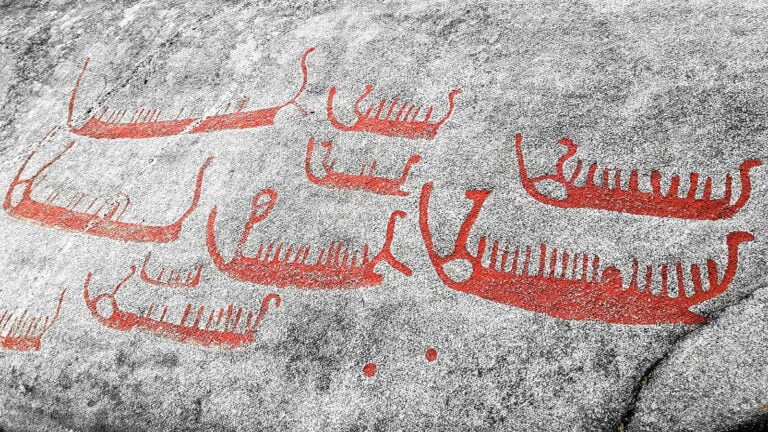
So, was there an earlier Viking Age when Scandinavians sailed the world? Let’s look at the evidence.
An earlier Viking Age of Bronze?
Firstly, what do we mean by Vikings and what would an earlier ‘Viking Age’ look like? There’s no main consensus on the origins of the word. Some suggest it means pirate or raider and others suggest it simply relates to the distance a rower could row before being tired and needing to be replaced.
One thing that’s for certain, a Viking era is characterised by seafaring, some violence and warfare, and international trade. At home, there needs to be farms and people living in longhouses as large families or clans. Finally, there would be global respect and perhaps a little fear.
Read More: Scandinavia Before the Vikings
Bronze Ages across Europe saw the development of societies in a number of ways. Bronze tools are much stronger and more powerful than the stone, and later copper, tools of the Stone Age. This allowed much easier and better construction of permanent buildings.
The Bronze Age started at different times in different countries and ran for different periods. In terms of Scandinavia, our Nordic Bronze Age ran from around 1750 to 500 BCE.
The Norse Bronze Age homestead
Prior to the Bronze Age, the cultures in Scandinavia had been either nomadic or semi-nomadic. The number of homesteads discovered by archaeologists is tiny.
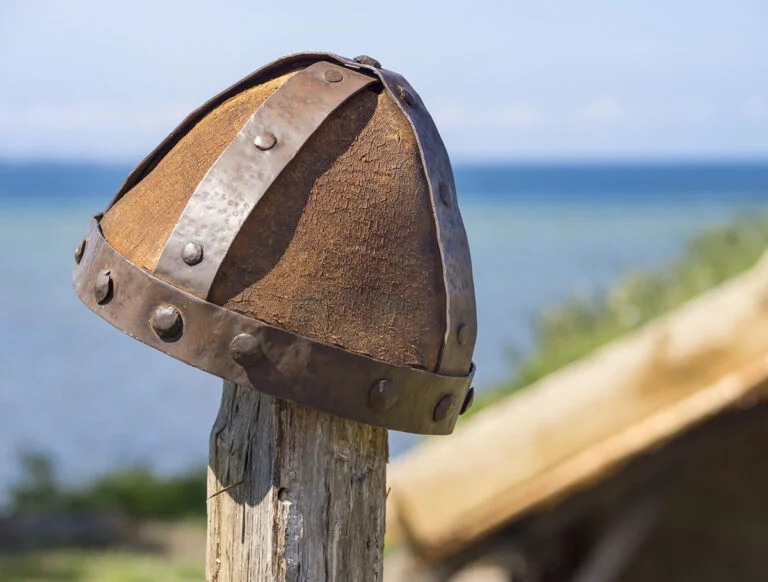
This could be because the sites have been lost by continuous working of the land but academics seem mostly convinced that, though settlements happened, they were rare.
By contrast, the Bronze Age sees the homestead come to a much more prominent position. Farming took over as the prominent profession and the farms were central to the culture of the age. Longhouses from the period ranged from small two-aisle dwellings to grand halls that could accommodate 100 or more people.
Agriculture had developed to the point where farming made much more sense than the previous hunter-gatherer culture. But as maritime folk, fishing was, and always would be, a part of the fabric of society.
Hunting for non-domestic animals such as Elk and Deer would also remain common but less necessary when farming sheep, pigs and cows.
Burial from the period has been seen in the form of the mounds and cairns that we traditionally associate with Norse people. We also see, for the first time, burial in oak coffins in wetlands, associated with mummification and preservation.
Read more: Norway Timeline: A Journey Through Norwegian History
This could have come from contact with the Egyptian civilisation where mummification had long been a practice.
In all, the living conditions and burial practices bear a strong resemblance to the ones that we find from Viking sites 2,000 years later.
Making friends abroad
Scandinavia is a region of great natural resources but, among them, you won’t find much copper or tin. So, to even have a Bronze Age, Norway needed to trade with other countries.
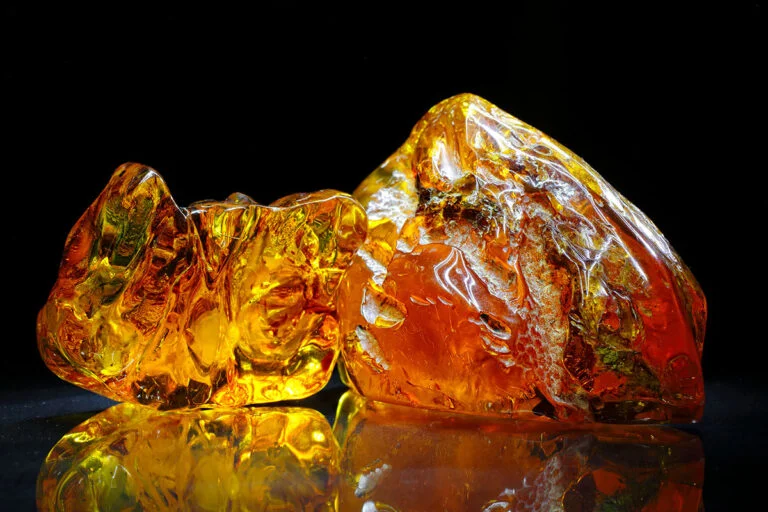
One product at the time, prized for its beauty and used in jewellery and ornaments, was amber. And it just so happens that the area had loads of it!
One of the earliest known trade routes was the Amber Road, that ran from what we now know as Russia all the way down through Central Europe to the Mediterranean, likely via the Dnieper and Vistula rivers.
From the Mediterranean it could then travel further east along the routes that would develop into the Silk Road. Many regard the Bronze Age as the first major period of globalisation.
Evidence for this trade route is visible throughout this part of Europe, and many of the places along the way have museums relating to the amber trade.
Even though Sicily was also a source of large quantities of amber, we still see Baltic amber in southern Europe. The tomb of Tutankhamen contains beads of Baltic amber on the pharaoh’s breast ornament, or example.
In return, the amber trade provided the northern countries with vital copper and tin, and bronze, which is an alloy of the two.
The question arises over whether people from the northern countries travelled south with their amber and picked up the metals to bring home, or whether they simply stayed at home and waited for traders to come to them.
We know the Norse people of the time used the water. When you live in a region with so much coastline, using the water becomes second nature. They would travel and fish extensively. Some scholars believe that the boats of the time, however, were little more than canoes and that long-distance travel was unlikely.
As time progresses and we find more and more evidence, it might be time to reevaluate that idea. Why? Well…it seems the people of the time were so obsessed with boats that they drew thousands of them on rocks.
Bronze Age rock carvings
Petroglyphs – pictures carved into rocks – are nothing new. They have been left behind by almost every known civilisation since the dawn of mankind. But while their content may be clear, it’s sometimes difficult to understand the meaning behind them.
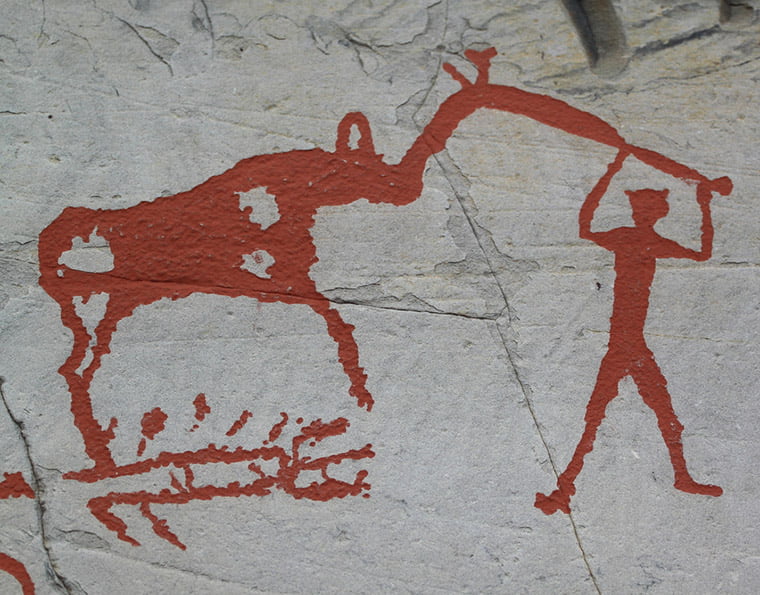
A ship, for example, might refer to a literal ship, taking men to war or exploring for new lands. Or it could be telling the story of ships arriving from abroad, with gangs to fight, or goods to buy.
But it could also be more symbolic, taking the dead to the afterlife. This is the context that used to be taught about the Bronze Age petroglyphs depicting ships.
For years, Norse history has basically been seen as ‘people lived here and then came the Viking Age when they suddenly became the most incredible maritime civilisation ever seen’.
Obviously, I’ve written it out in a highly distilled way, so it seems deliberately absurd. But it’s also obvious that as a theory it might not be all that robust!
Part of the problem is that almost all of the petroglyphs of ships, which actually account for around 80% of all known rock carvings in the area, are inland. Why would people carve pictures of ships inland if they were literal ships? Surely, they must relate to something else.
Which brings us to one of the most common errors throughout history. We tend to interpret stories of the past based on our knowledge, ethics, morals and biases of the present day. Sometimes what you need is for someone to come along as say ‘Ah but…’ to make things fall into place.
Cracking the code
A lot of the advance in our knowledge and understanding of petroglyphs is thanks to three friends. An archaeologist named Marcus Tangen, a graphic designer called Tormod Fjeld and a landscape architect by the name of Lars Ole Klavestad.
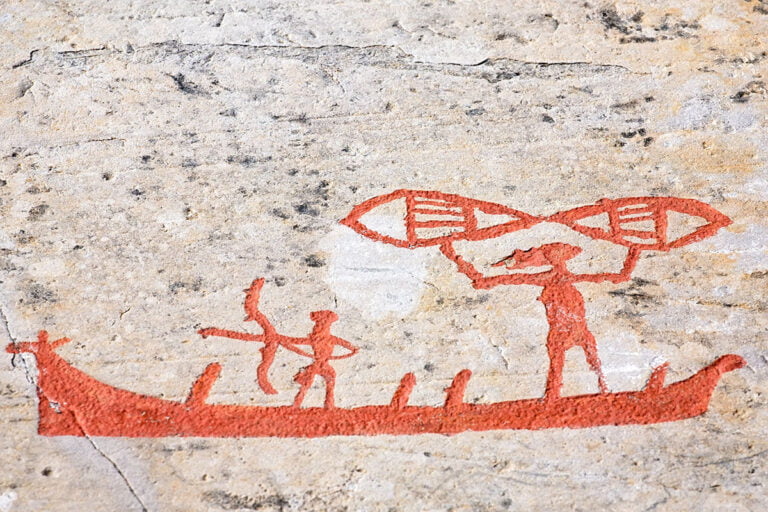
They looked at the places where the existing images were found and decided to test a hypothesis. By following contour lines on the map, they soon found more petroglyphs that hadn’t previously been discovered.
Why? Well, put simply, the level of the water in the seas around Norway was 15-20m higher than it is today. When you apply this, almost all of the boat and ship petroglyphs across the region turn out to be next to the water.
Since their early discoveries they have really developed their idea. Together the three friends have been responsible for increasing the number of known petroglyphs in Østfold, where the live, from 470 five years ago to over 700 today.
They go hunting once per week, always at night, and never fail to find something new. They’ve also made use of a technique called photogrammetry where, by taking pictures from all angles and then importing them into a computer, they can explore the carvings in more detail then they could using regular techniques.
From this they have worked out that certain images were created by the same people or groups and they can tell them apart between different groups.
They also know which carvings were made in what order so, if there’s a group of ships, they can tell whether it’s a fleet or simply marking different vessels over a period of years.
It’s fairly clear to the three friends that there are not simple ‘farming carvings’ as they were once known, and nor are they of a religious or superstitious nature. They have no doubt that the petroglyphs are made by a maritime people and relate directly to their own sea-faring activities.
How far did Bronze Age sailors travel?
It’s hard to know for sure how far these people travelled. Even though they carved ships into the rocks, these could still have been ‘local' boats.
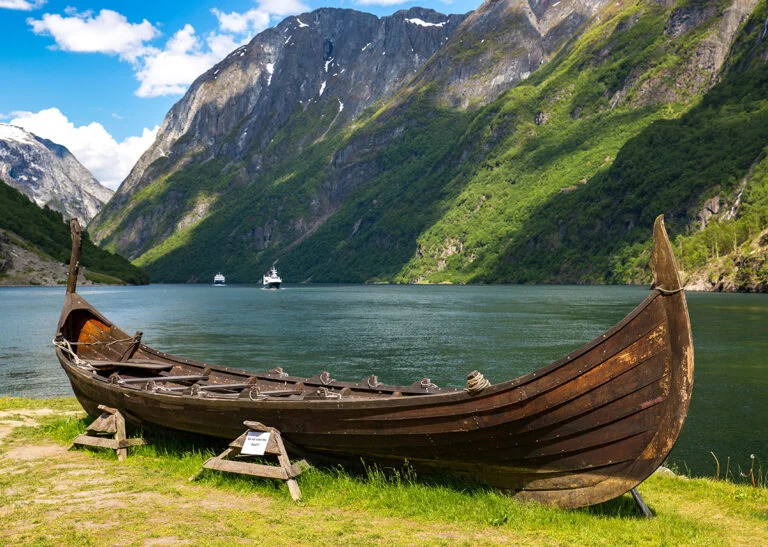
It’s a lot simpler to travel around the Norwegian fjords than it is to visit Greece! However, once clue comes in the distribution of the images.
We see these ship petroglyphs all the way up to Finnmark. If you can reach Finnmark by ship then you absolutely can reach the Mediterranean. Lene Melheim, an archaeologist and colleague of Marcus Tangen at Oslo’s Museum of Cultural History, is convinced.
“I think it’s likely that more than 3,000 years ago, Norwegians travelled by ship all the way to the Mediterranean,” Melheim said in an interview with Science Norway.
“Some of my colleagues would disagree with me on this. But I think it's very likely. We know that Norwegians had goods from southern Europe, and that they were probably strong seafarers. That means it is as likely that they travelled the world, as if middlemen came to Norway with all of these foreign goods,” she added.
For me, that’s really the crux of the matter. Yes, it’s possible that the Bronze Age Scandinavians sat passively in their farms waiting for metals to reach them. But from everything we know about the people of the region throughout history, that seems like the least likely scenario.
It’s also quite telling that, when the petroglyphs originally started to be discovered, and before they could be dated, it was assumed that they were made by the Vikings because they so closely resembled Viking ships.
Propelling boats
The best interpretation of the images suggests that the boats of this time were paddled rather than rowed. Rowing is first encountered in Iron Age boats of the period and it’s certainly not until the Viking Age that sails were used.
Some of the larger petroglyphs show crews as large as 60 men. It’s not known whether this is accurate or simply denoted ‘a large ship’ but it’s certainly true that even a crew of 20 men could propel a boat a very long way in a short period of time.
The picture archaeologists are piecing together changes all the time. We have seen burial sites from this period that are almost indistinguishable from Viking-era ones. We have seen that they had boats made of planks rather than the hollowed-out canoe-like boats that had previously been assumed.
A more complex civilisation
Overall, the direction of travel all seems to be towards a much more complex and skilled civilisation in Scandinavia than was previously thought. It may not be as great as the Viking Age of the early first Millennium CE.
It could in time come to be thought of as Vikings 1.0. Or maybe it’s simply an earlier entry in the long and esteemed maritime history of the Norse folk.


This is a fascinating article. Is it possible that some of these carvings are a “map” of where some traveled to lead the way for others to follow?
My great wish is that your articles offered a .pdf link. I have a notebook of your articles cluttered with ads that go on for pages!
Thanks for the idea, but with no ads on the site, I would be working full-time with no income.
Hi David,
Thanks a lot for your research and providing us again and again with fascinating new stories!
Many of your articles like this are pure motivation to continue ones own look around for more information.
I am looking forward to all what will be coming next!
When presenting at Norwegian genealogy audiences, I hypothesize that rowing or paddling to another ‘vik’ to buy or sell goods could have began the simple terminology use of ‘going vik-ing’.
Have you ever studied the Petroglyphs in Peterborough Canada?
The similarities are really startling.
I know Barry Fell is a 4 letter word in archeological circles, but no one has been able to truly explain the almost identical appearance of these.
https://jimbyerstravel.com/2020/07/20/berry-jam-petroglyphs-and-canoes-a-tasty-visit-to-peterborough-and-the-kawarthas/
If the Ancient Norse could sail to the Mediterranean is it not in the realm of possibility that they could traverse the North Atlantic and access the largest natural pure copper deposits in the world in the great lakes Region?
Excellent research, But I would suggest a further work towards finding the source of the knowledge of the pre vikings scandinavians, it is so obvious that the Phoenicians had the most influence, in trade, metals, shipbuilding, tools, symbols, fetishes etc. even Thor’s Hammer was a Phoenician symbol.